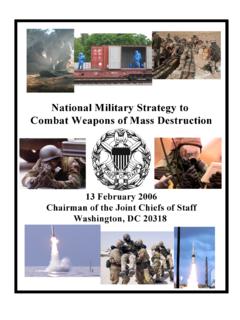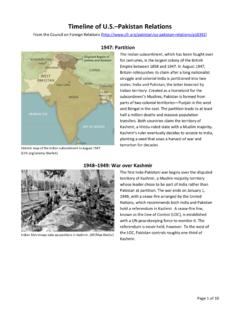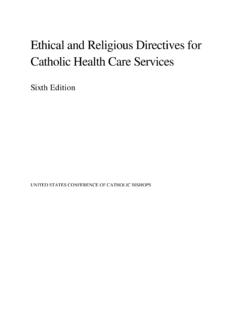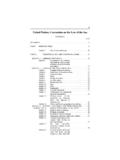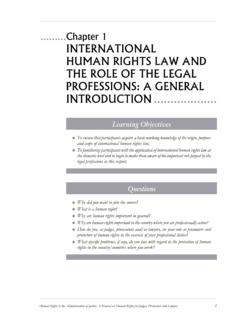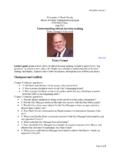Transcription of NSC 68: United States Objectives and Programs for …
1 NSC-68, Objectives and Programs for national security , April 1950 [7/16/2010 2:44:57 PM]Source: Naval War College Review, Vol. XXVII (May-June, 1975), pp. 51-108. Also in Department of State,Foreign Relations of the United States : 1950, Volume I. NSC 68: United States Objectives and Programs for national security (April 14, 1950)A Report to the PresidentPursuant to the President's Directiveof January 31, 1950 TOP SECRET[Washington,] April 7, 1950 ContentsTerms of ReferenceAnalysisI. Background of the Present World CrisisII. The Fundamental Purpose of the United StatesIII. The Fundamental Design of the KremlinIV. The Underlying Conflict in the Realm of Ideas and Values Between the Purpose and the Kremlin Design1.
2 Nature of the Conflict2. Objectives3. MeansV. Soviet Intentions and Capabilities--Actual and PotentialVI. Intentions and Capabilities--Actual and PotentialVII. Present RisksVIII. Atomic ArmamentsA. Military Evaluation of and Atomic CapabilitiesB. Stockpiling and Use of Atomic WeaponsC. International Control of Atomic EnergyIX. Possible Courses of ActionIntroductionThe Role of NegotiationA. The First Course--Continuation of Current Policies, with Current and Currently Projected Programs for CarryingNSC-68, Objectives and Programs for national security , April 1950 [7/16/2010 2:44:57 PM]Out These ProjectsB. The Second Course--IsolationC. The Third Course--WarD.
3 The Remaining Course of Action--A Rapid Build-up of Political, Economic, and Military Strength in the FreeWorldConclusionsRecommendations TERMS OF REFERENCEThe following report is submitted in response to the President's directive of January 31 which reads:That the President direct the Secretary of State and the Secretary of Defense to undertake a reexaminationof our Objectives in peace and war and of the effect of these Objectives on our strategic plans, in the lightof the probable fission bomb capability and possible thermonuclear bomb capability of the Soviet document which recommended that such a directive be issued reads in part:It must be considered whether a decision to proceed with a program directed toward determiningfeasibility prejudges the more fundamental decisions (a) as to whether, in the event that a test of athermonuclear weapon proves successful, such weapons should be stockpiled, or (b) if stockpiled, theconditions under which they might be used in war.
4 If a test of a thermonuclear weapon proves successful,the pressures to produce and stockpile such weapons to be held for the same purposes for which fissionbombs are then being held will be greatly increased. The question of use policy can be adequatelyassessed only as a part of a general reexamination of this country's strategic plans and its Objectives inpeace and war. Such reexamination would need to consider national policy not only with respect topossible thermonuclear weapons, but also with respect to fission weapons--viewed in the light of theprobable fission bomb capability and the possible thermonuclear bomb capability of the Soviet Union. Themoral, psychological, and political questions involved in this problem would need to be taken into accountand be given due weight.
5 The outcome of this reexamination would have a crucial bearing on the furtherquestion as to whether there should be a revision in the nature of the agreements, including theinternational control of atomic energy, which we have been seeking to reach with the Background of the Present CrisisWithin the past thirty-five years the world has experienced two global wars of tremendous violence. It has witnessedtwo revolutions--the Russian and the Chinese--of extreme scope and intensity. It has also seen the collapse of fiveempires--the Ottoman, the Austro-Hungarian, German, Italian, and Japanese--and the drastic decline of two majorimperial systems, the British and the French.
6 During the span of one generation, the international distribution of powerhas been fundamentally altered. For several centuries it had proved impossible for any one nation to gain suchpreponderant strength that a coalition of other nations could not in time face it with greater strength. The internationalscene was marked by recurring periods of violence and war, but a system of sovereign and independent States wasmaintained, over which no state was able to achieve complex sets of factors have now basically altered this historic distribution of power. First, the defeat of Germanyand Japan and the decline of the British and French Empires have interacted with the development of the United StatesNSC-68, Objectives and Programs for national security , April 1950 [7/16/2010 2:44:57 PM]and the Soviet Union in such a way that power increasingly gravitated to these two centers.
7 Second, the Soviet Union,unlike previous aspirants to hegemony, is animated by a new fanatic faith, anti-thetical to our own, and seeks toimpose its absolute authority over the rest of the world. Conflict has, therefore, become endemic and is waged, on thepart of the Soviet Union, by violent or non-violent methods in accordance with the dictates of expediency. With thedevelopment of increasingly terrifying weapons of mass destruction, every individual faces the ever-present possibilityof annihilation should the conflict enter the phase of total the one hand, the people of the world yearn for relief from the anxiety arising from the risk of atomic war. On theother hand, any substantial further extension of the area under the domination of the Kremlin would raise thepossibility that no coalition adequate to confront the Kremlin with greater strength could be assembled.
8 It is in thiscontext that this Republic and its citizens in the ascendancy of their strength stand in their deepest issues that face us are momentous, involving the fulfillment or destruction not only of this Republic but ofcivilization itself. They are issues which will not await our deliberations. With conscience and resolution thisGovernment and the people it represents must now take new and fateful Fundamental Purpose of the United StatesThe fundamental purpose of the United States is laid down in the Preamble to the Constitution: ".. to form a moreperfect Union, establish justice, insure domestic Tranquility, provide for the common defence, promote the generalWelfare, and secure the Blessings of Liberty to ourselves and our Posterity.
9 " In essence, the fundamental purpose is toassure the integrity and vitality of our free society, which is founded upon the dignity and worth of the realities emerge as a consequence of this purpose: Our determination to maintain the essential elements ofindividual freedom, as set forth in the Constitution and Bill of Rights; our determination to create conditions underwhich our free and democratic system can live and prosper; and our determination to fight if necessary to defend ourway of life, for which as in the Declaration of Independence, "with a firm reliance on the protection of DivineProvidence, we mutually pledge to each other our lives, our Fortunes, and our sacred Honor.
10 "III. Fundamental Design of the KremlinThe fundamental design of those who control the Soviet Union and the international communist movement is to retainand solidify their absolute power, first in the Soviet Union and second in the areas now under their control. In theminds of the Soviet leaders, however, achievement of this design requires the dynamic extension of their authority andthe ultimate elimination of any effective opposition to their design, therefore, calls for the complete subversion or forcible destruction of the machinery of government andstructure of society in the countries of the non-Soviet world and their replacement by an apparatus and structuresubservient to and controlled from the Kremlin.


